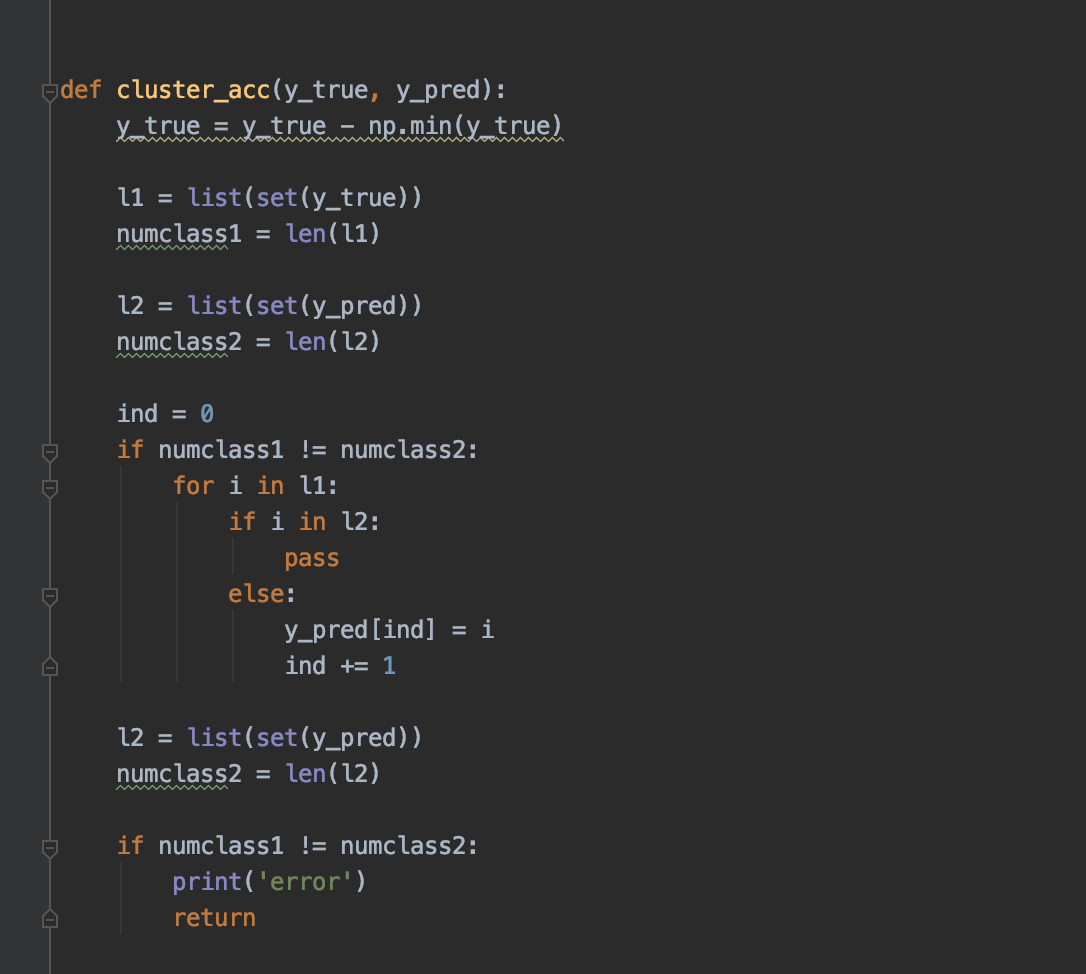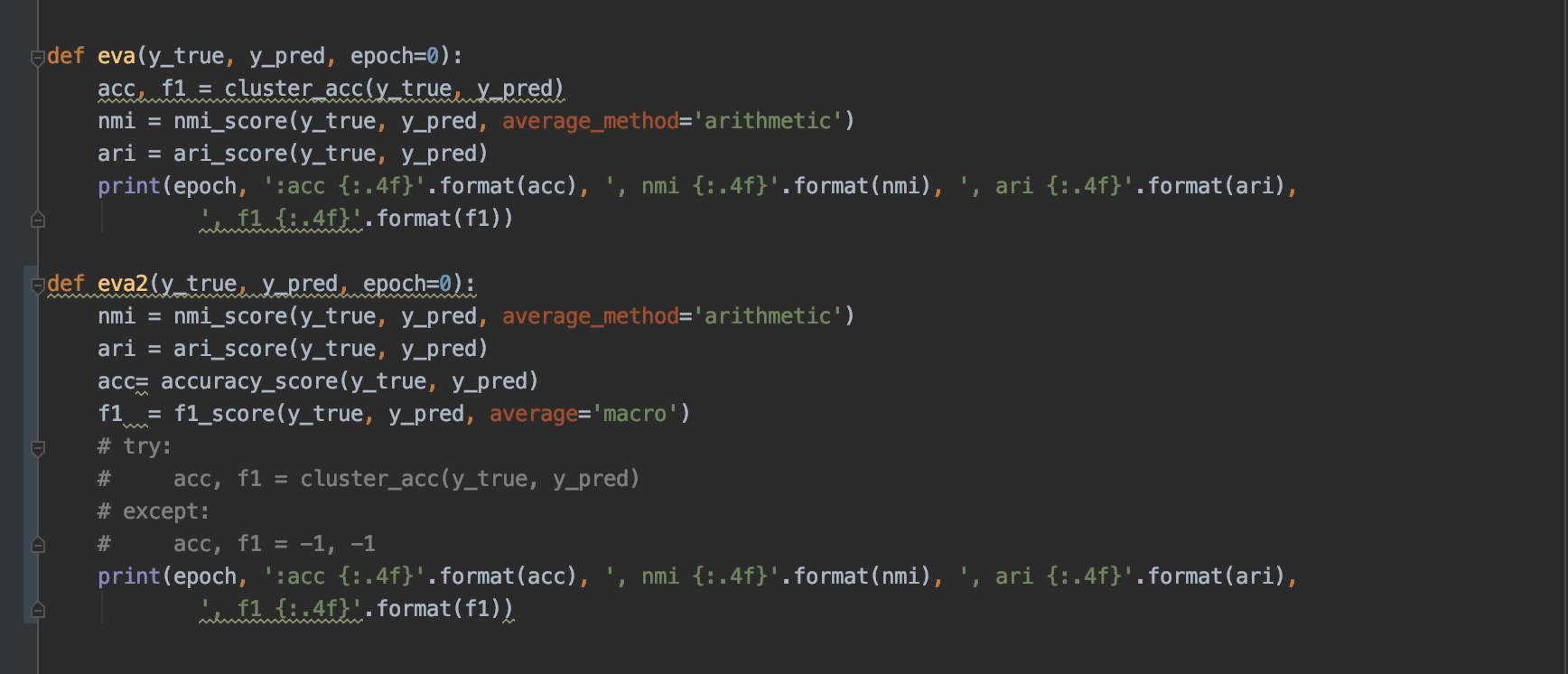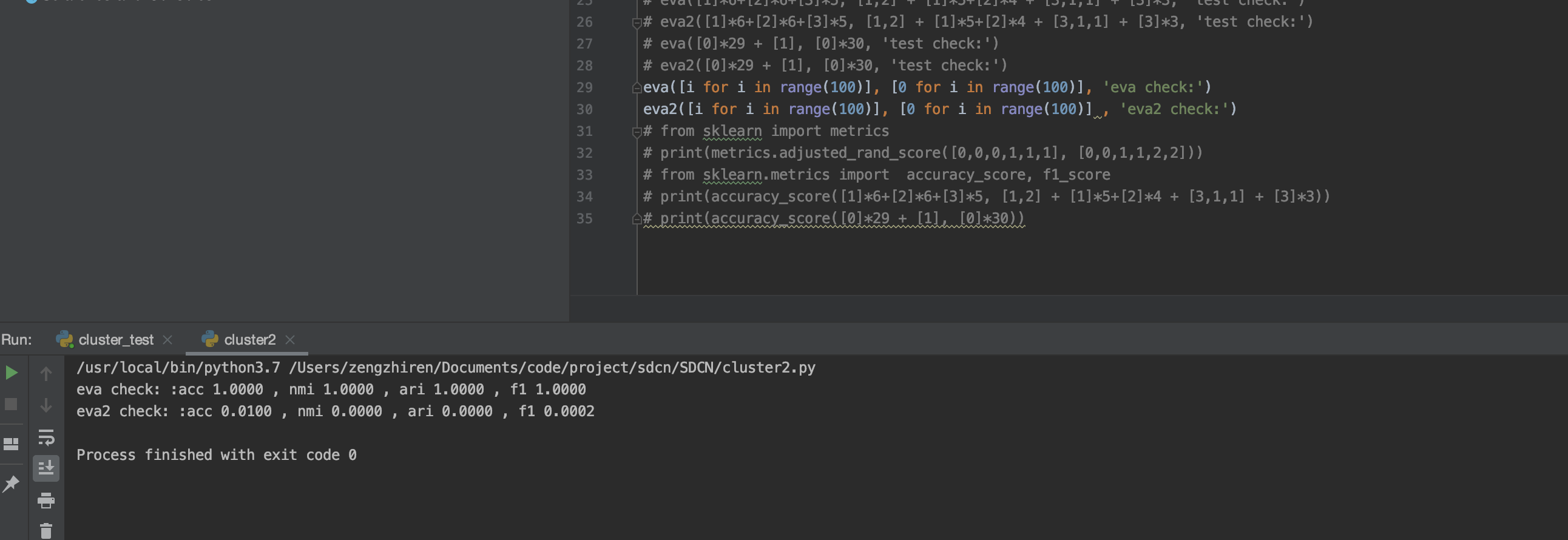Structural Deep Clustering Network
https://arxiv.org/abs/2002.01633
https://github.com/461054993/SDCN/blob/master/SDCN.pdf
Due to the limitation of file size, the complete data can be found in
Baidu Netdisk:
graph: 链接:https://pan.baidu.com/s/1MEWr1KyrtBQndVNy8_y2Lw 密码:opc1
data: 链接:https://pan.baidu.com/s/1kqoWlElbWazJyrTdv1sHNg 密码:1gd4
Google Drive:
graph: https://drive.google.com/file/d/10rnVwIAuVRczmZJSX7mpSTR0-HVnMWLh/view?usp=sharing
data: https://drive.google.com/file/d/1VjH6xqt82GaQwwiy-4O2GedMgQMLN6dm/view?usp=sharing
python sdcn.py --name [usps|hhar|reut|acm|dblp|cite]
-
Q: Why do not use distribution Q to supervise distribution P directly?
A: The reasons are two-fold: 1) Previous method has considered to use the clustering assignments as pseudo labels to re-train the encoder in a supervised manner, i.e., deepCluster. However, in experiment, we find that the gradient of cross-entropy loss is too violent to prevent the embedding spaces from disturbance. 2) Although we can replace the cross-entropy loss with KL divergence, there is still a problem that we worried about, that is, there is no clustering information. The original intention of our research on deep clustering is to integrate the objective of clustering into the powerful representation ability of deep learning. Therefore, we introduce the distribution P to increase the cohesion of clustering performance, the details can be found in DEC. -
Q: How to apply SDCN to other datasets?
A: In general, if you want to apply our model to other datasets, three steps are required.- Construct the KNN graph based on the similarity of features. Details can be found in
calcu_graph.py. - Pretrain the autoencoder and save the pre-trained model. Details can be found in
data/pretrain.py. - Replace the args in
sdcn.pyand run the code.
- Construct the KNN graph based on the similarity of features. Details can be found in
If you make advantage of the SDCN model in your research, please cite the following in your manuscript:
@inproceedings{sdcn2020,
author = {Deyu Bo and
Xiao Wang and
Chuan Shi and
Meiqi Zhu and
Emiao Lu and
Peng Cui},
title = {Structural Deep Clustering Network},
booktitle = {{WWW}},
pages = {1400--1410},
publisher = {{ACM} / {IW3C2}},
year = {2020}
}







